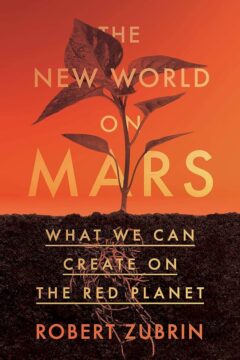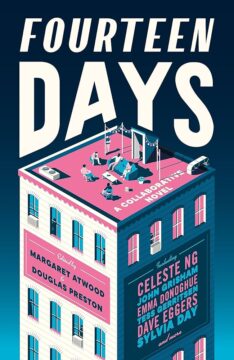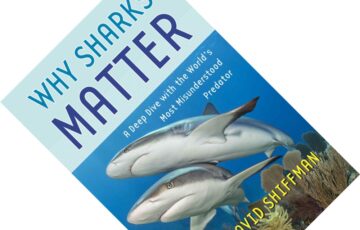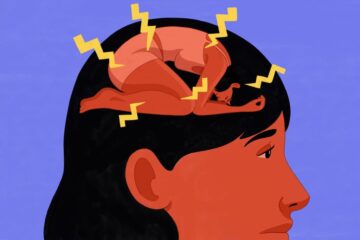Marisa Meltzer at the NYT:
 The case was the stuff of tabloid dreams. It had everything: murder, blackmail, money, class, secrets, even the occult. And the public, in the time of Prohibition, anti-vice crusades and so-called purity campaigns to combat germs, couldn’t get enough of it.
The case was the stuff of tabloid dreams. It had everything: murder, blackmail, money, class, secrets, even the occult. And the public, in the time of Prohibition, anti-vice crusades and so-called purity campaigns to combat germs, couldn’t get enough of it.
Polchin knows the era, and brings to his account a wealth of colorful supporting detail. While in the Westchester County jailhouse, for instance, Ward (who, despite a lack of experience, was the head of New Rochelle Police Commissioners) was placed in the same relatively luxurious “jail apartment” that another scion, Harry K. Thaw, had inhabited some 15 years earlier, after shooting the architect Stanford White at Madison Square Garden.
We also hear about the dapper William Fallon, a well-known criminal attorney, who in college “devised a three-mirror system that allowed him to cut his own hair, a trick that gave him complete control over the way he looked from almost every conceivable angle.”
more here.

 Imagine if after Oppenheimer successfully detonated the first atomic bomb, the rest of the world had just shrugged its shoulders and carried on as normal.
Imagine if after Oppenheimer successfully detonated the first atomic bomb, the rest of the world had just shrugged its shoulders and carried on as normal. For good and valid reasons, most of the United States has moved away from having electricity generated, transmitted and delivered by monopolies. The reasons for the change did not primarily have to do with nuclear energy. But a nuclear renaissance could turn out to be a casualty. The old model made construction of a new power plant a shared risk; the new one, in most of the country, turns building a generator into a speculative investment.
For good and valid reasons, most of the United States has moved away from having electricity generated, transmitted and delivered by monopolies. The reasons for the change did not primarily have to do with nuclear energy. But a nuclear renaissance could turn out to be a casualty. The old model made construction of a new power plant a shared risk; the new one, in most of the country, turns building a generator into a speculative investment. The Red Planet has long captured human imagination, going at least as far back as the ancient Greeks, who designated it the god of war. In the modern era, once it was understood that Mars was another planet in our system that could be seen through telescopes, it became romanticized by astronomers like Giovanni Schiaparelli and Percival Lowell, generating dreams of canals and life and civilizations — dreams later disappointed by instruments showing it to be apparently lifeless and desiccated.
The Red Planet has long captured human imagination, going at least as far back as the ancient Greeks, who designated it the god of war. In the modern era, once it was understood that Mars was another planet in our system that could be seen through telescopes, it became romanticized by astronomers like Giovanni Schiaparelli and Percival Lowell, generating dreams of canals and life and civilizations — dreams later disappointed by instruments showing it to be apparently lifeless and desiccated. Seven of the following ten books have something to do with the Covid pandemic 2019–22, and the remaining three address some of the other traumas that consume our politics, and planet, during these troubled times. “Aren’t you worried?” a character in Hari Kunzru’s novel Blue Ruin asks, “I mean, about the future?” It’s a question many of us are asking.
Seven of the following ten books have something to do with the Covid pandemic 2019–22, and the remaining three address some of the other traumas that consume our politics, and planet, during these troubled times. “Aren’t you worried?” a character in Hari Kunzru’s novel Blue Ruin asks, “I mean, about the future?” It’s a question many of us are asking. To have a child, it is often said, is to transform one’s identity. What this might have meant in the past is more or less obvious: With few exceptions, for the better part of history, to have a child meant it was time for a woman to say her final farewells to whatever public existence she managed to forge up to that point. But now there is another, more mysterious change that becoming a mother is understood to imply, more basic than the historical conditions of oppression. This change is supposed to reconfigure the deepest core of one’s being. When the contemporary analytic philosopher L. A. Paul wanted to introduce the idea of a fundamentally transformative experience, one of her central examples was having a child. For women, especially, becoming a parent is frequently described as a total revolution of the self. “Giving birth to a baby is, literally, splitting in two, and it is not always clear which one your ‘I’ goes with,” philosopher Agnes Callard
To have a child, it is often said, is to transform one’s identity. What this might have meant in the past is more or less obvious: With few exceptions, for the better part of history, to have a child meant it was time for a woman to say her final farewells to whatever public existence she managed to forge up to that point. But now there is another, more mysterious change that becoming a mother is understood to imply, more basic than the historical conditions of oppression. This change is supposed to reconfigure the deepest core of one’s being. When the contemporary analytic philosopher L. A. Paul wanted to introduce the idea of a fundamentally transformative experience, one of her central examples was having a child. For women, especially, becoming a parent is frequently described as a total revolution of the self. “Giving birth to a baby is, literally, splitting in two, and it is not always clear which one your ‘I’ goes with,” philosopher Agnes Callard  Every year, cancer kills approximately 10 million people worldwide. Of those who die, two thirds do so because they were diagnosed with advanced disease. A new paradigm in the approach to cancer is overdue. COVID-19 has already altered conversations and expectations within the medical community and is forcing a rethinking of many public health issues.
Every year, cancer kills approximately 10 million people worldwide. Of those who die, two thirds do so because they were diagnosed with advanced disease. A new paradigm in the approach to cancer is overdue. COVID-19 has already altered conversations and expectations within the medical community and is forcing a rethinking of many public health issues. Dear Reader,
Dear Reader, What happens to the job market when the government raises the minimum wage? For decades, higher education in the United States has taught economics students to answer this question by reasoning from first principles. When the price of something rises, people tend to buy less of it. Therefore, if the price of labour rises, businesses will choose to ‘buy’ less of it – meaning they’ll hire fewer people. Students learn that a higher minimum wage means fewer jobs.
What happens to the job market when the government raises the minimum wage? For decades, higher education in the United States has taught economics students to answer this question by reasoning from first principles. When the price of something rises, people tend to buy less of it. Therefore, if the price of labour rises, businesses will choose to ‘buy’ less of it – meaning they’ll hire fewer people. Students learn that a higher minimum wage means fewer jobs. When it comes to protecting animal species, you would think that conservation biologists, environmental advocates, and animal-loving members of the public are all on the same page. However, in Why Sharks Matter, marine biologist David Shiffman shows that this is not always the case. Though there are plenty of books marvelling at sharks, this, to my knowledge, is the first one to provide an informed and informative look at shark conservation. Frank, frequently opinionated, and full of refreshingly counterintuitive ideas, Why Sharks Matter is an eye-opener that delivered far more than I expected based on the title.
When it comes to protecting animal species, you would think that conservation biologists, environmental advocates, and animal-loving members of the public are all on the same page. However, in Why Sharks Matter, marine biologist David Shiffman shows that this is not always the case. Though there are plenty of books marvelling at sharks, this, to my knowledge, is the first one to provide an informed and informative look at shark conservation. Frank, frequently opinionated, and full of refreshingly counterintuitive ideas, Why Sharks Matter is an eye-opener that delivered far more than I expected based on the title. Michoacán, where about four in five of all avocados
Michoacán, where about four in five of all avocados  Saurabh Netravalkar finds it hard to log off Slack. But a few weeks ago, the Oracle software engineer shipped his final code and set an out-of-office note on the messaging app to focus on a more personal goal: playing for the United States’ underdog cricket team at the T20 World Cup. “If there is anything urgent, my manager should be able to reach me,” he said in an interview with The Washington Post. “But I’m completely focused on the World Cup.”
Saurabh Netravalkar finds it hard to log off Slack. But a few weeks ago, the Oracle software engineer shipped his final code and set an out-of-office note on the messaging app to focus on a more personal goal: playing for the United States’ underdog cricket team at the T20 World Cup. “If there is anything urgent, my manager should be able to reach me,” he said in an interview with The Washington Post. “But I’m completely focused on the World Cup.” Six years ago, Dr. Elizabeth Comen, a breast cancer specialist at Memorial Sloan Kettering Hospital in Manhattan, held the hand of a patient who was hours from death. As Dr. Comen leaned in for a final goodbye, she pressed her cheek to her patient’s damp face. “Then she said it,” Dr. Comen recalled. “‘I’m so sorry for sweating on you.’” In her two decades as a physician, Dr. Comen has found that women are constantly apologizing to her: for sweating, for asking follow-up questions, for failing to detect their own cancers sooner.
Six years ago, Dr. Elizabeth Comen, a breast cancer specialist at Memorial Sloan Kettering Hospital in Manhattan, held the hand of a patient who was hours from death. As Dr. Comen leaned in for a final goodbye, she pressed her cheek to her patient’s damp face. “Then she said it,” Dr. Comen recalled. “‘I’m so sorry for sweating on you.’” In her two decades as a physician, Dr. Comen has found that women are constantly apologizing to her: for sweating, for asking follow-up questions, for failing to detect their own cancers sooner.